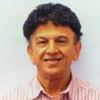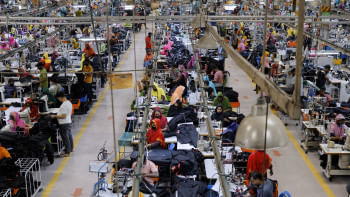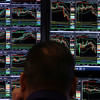Economic lessons from the tariff war

The first round of Trump's tariff war has ended in a stalemate. China and the US, the two key players, are contemplating their next move. President Xi Jinping is visiting Vietnam, Cambodia, and Malaysia to shore up support for the next round of the war. Before President Trump declared the 90-day pause, the global financial market was jittery, and many developing countries, including Bangladesh, were scampering for a countermove or a response to offset the damage to their respective economies.
The current tariff war offers some important lessons for economists as well as the practitioners of statecraft. In this age of artificial intelligence (AI), one wonders why the small group of US policymakers, including the Secretary of the Treasury Scott Bessent and the Chairman of the Council of Economic Advisers Stephen Miran, sign off on the so-called Liberation Day tariff package, which marked the beginning of a global trade war and triggered a global stock market crash?
During my studies at the Dhaka University and the graduate school at Boston University, we were reminded that tariffs can be harmful to the domestic economy, but developing countries may use tariffs to protect an "infant industry" only for a temporary period. However, US President Trump is using tariffs to achieve some of the economic and political goals he promised during his election campaign. For months, his team has worked on the policy package, particularly its timing, target commodities and countries. However, we now know that some of the resultant fallouts has surprised his core team of advisers.
What can policymakers and the next generation of economists take away from the first round? I will answer these questions and add some notes for economics professors.
First, in most textbooks, economic models are based on the assumption of free trade, perfect competition, and "small country." It can be shown that tariffs harm the consumers and should be avoided since they reduce economic welfare. However, in real life, gains from trade are distributed unequally between trading partners. Some countries, particularly the rich and the strong, have the upper hand in trade negotiations. Therefore, the discussions on trade theory in economics must be part of a broader discussion, touching upon political science.
Second, tariffs, once introduced and codified, leave their marks on the markets. If US introduce tariffs to re-shore manufacturing on a large scale, the next administration will find it difficult to reverse it. In other words, the assumption of a "frictionless world" in the textbooks is a myth.
Third, new textbook authors and researchers need to consider "international trade theory" in the context of Game theory. The Game theory model is better equipped to take into account the realities of the modern world where one country (the US) is the world's largest debtor and its enemy (China) is the largest creditor.
Fourth, undergraduate students must be made aware of the importance of the "model" or assumptions behind each theory. For example, the existing "Pure Theory of International Trade" is based on the theory of comparative advantage stating how two countries evolving from autarky can experience gains based on comparative advantage after they open up for trade.
Former World Trade Organization Director Pascal Lamy in one of his speeches talked about a paper by pioneering economist Paul Samuelson which was published in the Summer 2004 issue of the Journal of Economic Perspectives. He said that the paper theoretically showed "how technical progress in a developing country like China had the potential to reduce the gains from trade to a developed country like the United States." He added that the paper, "appeared to be a dramatic about-face against the idea that open trade based on comparative advantage is mutually beneficial."
Harvard's Greg Mankiw wrote, "I agree with Paul Samuelson…, who has recently spoken and written about how comparative advantage as it is classically understood may not be descriptive of the 21st century economy in which we find ourselves."
Fifth, countries use tariffs today for reasons other than protection. As discussed in my previous column in this newspaper, tariffs can be used for retaliation, as the US is now doing. However, politicians who use tariffs as a tool of statecraft, which is the skilful management of state affairs, should be conscious that issues of statecraft require great deliberation.
The next generation of economics professors should review and remove some prevalent misconceptions about tariffs. For example the assertion that higher tariffs strengthen the value of a country's currency is not totally correct.
As we saw, Trump's tariff announcement sent the value of the US dollar plunging. One of the goals of Trump's tariff war is to weaken the dollar. By weakening the dollar and imposing strategic tariffs, Stephen Miran believes that the US could correct long-standing imbalances in the global system. He outlined his idea in a 41-page essay titled "A User's Guide to Restructuring the Global Trading System."
If students of economics are taught that tariffs are bad, they should take it with a grain of salt. If civil servants, businesspersons, or policymakers face export tariffs, they should consider the current environment, assess the situation, and then negotiate a deal with their opponent or trading partner.
Dr Abdullah Shibli is an economist and currently employed at a non-profit financial intermediary in the USA. He previously worked for the World Bank and Harvard University.
Views expressed in this article are the author's own.
Follow The Daily Star Opinion on Facebook for the latest opinions, commentaries and analyses by experts and professionals. To contribute your article or letter to The Daily Star Opinion, see our guidelines for submission.

 For all latest news, follow The Daily Star's Google News channel.
For all latest news, follow The Daily Star's Google News channel. 






Comments